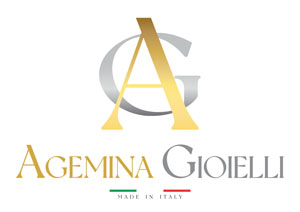Pandora has opened its box. What has come out of it are not all the evils of the world – as Greek mythology tells us – but a marketing genius who has indeed made a master stroke in the field of public relations, though this time the rabbit bombastically pulled out of the hat proved to be a highly inappropriate one.
Pandora, a world leader announces: no more natural diamonds on our jewels!
The attempted Diamond Assassination – which took place on the the occasion (evocative power of History) of the twentieth anniversary (May 5th 1821) of the “mortal sigh exhaled by the Fatal Man”1 (Napoleon) – is a direct consequence of the aforementioned released statement and of the international press fuss that followed it (throughout all communication media, including those not related to the industry2). It was the work of a California-based Austrian (specifically, Silicon Valley-based, facing the beautiful San Francisco Bay), co-founder and co-owner of the Diamond Foundry (nomen omen). However, he too, infatuated with the Ethics and Eco-Sustainability Goddesses, has gone too far, so to speak. Your Bad-Mouthed Jiminy Cricket (BMJC, for his friends) “stood, by the tidings, struck, in amaze”1 and then put in gear those few neurons that his cricket head has, so as to put in order his thoughts.
All right, let’s get to the facts. With 26,000 employees and 7,000 outlets spread over the 4 habitable continents3 and 3 billion dollars (US) in sales (85 million pieces) across 100 countries including its homeland Denmark, Pandora can legitimately be considered one of the most outstanding jewelry producers on Planet Earth. On May 5th Pandora’s CEO Alexander Lacik announced from Copenhagen to the whole world that they will no longer mount even one point (of a carat) of natural diamonds on their jewels4, but only and exclusively synthetic man made diamonds, which are now considered “ethical, environmentally friendly, sustainable and carbon-free or carbon-neutral”. So let me quote his own candid words “the world will be left in better conditions”. The news spreads from office to office5 all around the world, overflowing all conceivable TV channels. It causes a strong sensation among the less well informed and jubilation and joy – ça va sans dire – among the watchful crowd concerned with ethical and eco-sustainability awareness, the fate of Gea and the future health of mankind. It’s like Coca-Cola proclaiming they will no longer – for the aforementioned ethical reasons – sell Coke or McDonald’s its stuffed Mac sandwiches6. A disaster for the “invincible”, the “indomitable” αδαμας Adamas? Are we supposed to use the past tense when talking about diamond and say, paraphrasing the famous Italian author Alessandro Manzoni, “he was”1? Not really. While apparently the effect of the media coverage was sensational hype at no cost (a master stroke, it was said) and self-celebration for the champions of social justice, the alleged benefits remain rather questionable. The reason is obvious as 95% of the pendants, bracelets, rings, necklaces and earrings produced by Pandora are sold to the end consumers at prices lower than 150 dollars and only 1 in 1,700, or 50,000 pieces, is made with natural diamonds5. When converted into a percentage, that equals to 0.04%. All the remaining stones are nothing more but cubic zirconium (artificial product). Additionally, production costs are brought down by using sterling silver settings and 14 kt gold plated metal alloys (that’s what they are doing now but – being not yet satisfied – they are also planning on using recycled metals next). So, as much as you can pull Linus’ blanket from all sides, which diamonds (whether natural or lab-grown) can you set on those 50,000 pieces to be sold at max US$ 150 to the general public? Certainly not hundreds or tens of thousands of carats6. A few thousand. The impact on the (natural) diamond industry is therefore zero point zero and something, in purely financial terms (it would be different if it were Bulgari, Tiffany, Cartier, Van Cleef & Arpels making such an announcement, just not to mention De Beers).

In the cricket’s lair such a thing is given a precise term: big bluff and media manipulation in the absence of scientific evidence
Yes, this is indeed a bluff7, cloaked with the messianic messages of the New Green Creed before which more and more – uncritically – we use to kneel. They are shooting at us from right and left without a shred of scientific explanation in support. The imperative assertion that lab-grown diamonds, as opposed to natural diamonds, are ethical, environmentally friendly, sustainable and carbon neutral does not automatically make them so, when no independently and impartially certified evidence is provided. Or do you have the pretension of imposing dogmas and acts of faith, as if it were a New Revealed Religion? Doesn’t the end consumer (and the industry as a whole) have the right to be fully informed about how much reliable these statements are, in order to choose one or the other between the two options?8 And here we leave the word to Herr/Mister Martin Roscheisen2, the Prophet of Diamond Foundry, since what Pandora certifies is nothing but the echo of his Word. It is his “Diamond Foundry”, with a US$ two billion market capitalization, that from now on will supply the mythical Norse queen of jewels (Pandora) with those (according to him) “precious stones produced without impacting in any way on the environment, without exploiting the cheap labor employed in the mines, without exercising violence on nature by creating environmental and social problems”2. The Prophet is also determined “to clean the diamond of blood”, as well expressed by actor Leonardo Di Caprio in the movie “Blood Diamonds” directed by Edward Zwick9. Maybe this is why Di Caprio, consistent with his ethical views, has decided to invest a few million dollars in this Foundry10. He and a handful of Silicon Valley billionaires (founders of Google, iPod, eBay, Twitter, Facebook) injected 100 million US$11 to revive the “magnificent destiny and progress” of the Foundry, which can now stand committed to its mission of redeeming the world. There’s no question about how you want to invest your money. But do not let this pass for anything ethical, please, since “ethical” is understood by definition as something that concerns human activity insofar as it can be evaluated with the principle of separating good from evil. Well, when it comes to the human activity involving the environment, would you please tell me where the borderline separating good and evil is, if for the production of lab-grown diamonds is required a much higher electricity consumption than in the whole natural diamond mining process, as verified and certified by SCS Global Services12? More specifically, isn’t it a fact that Diamond Foundry’s electricity needs amount to 19 megawatts13? Doesn’t this amount equal the consumption of 14,000–19,000 households according to the California Department of Energy14? Is there anything ethical (or eco-sustainable, for that matter) about the fact that 98.46% of this energy amount comes from hydroelectric production and only 1.54% from other (renewable) sources? This is the information available from the California Energy Department and the Public Utility District of Chelan County14, Washington State, the electricity supplier of the Foundry. Figures in hand. And what do they tell us? They tell us that 60% of the energy used is renewable and that it is expected to be 100% by next year15. Really, in such a short time, such sudden conversions? We yearn for light.

Three times the CO2 emissions required to mine diamonds. But how ethical are you really, lab-grown diamond?
Who’s telling the right story and who’s not? Do we have to put that down to ethics, too, or not? Or are these bombastic claims just “spiritose invenzioni (witty inventions)”, to quote the Italian playwright Carlo Goldoni? Or, since renewable energy sources are not used by any synthetic diamond producer, is the consumption of renewable only a kind of “energy credits”? Is this also an ethical issue? Ask TRUCOST ESG Analysis (S&P Global Group)16, the most internationally credible independent agency for environmental risk analysis. By translating (real) energy consumption into CO2 emissions (based on pure experimental parameters), TRUCOST has ascertained that, on average, the CO2 emission per carat of manufactured stones is 511 kg for lab-grown diamonds and 160 kg for natural diamonds, three times less. Three times less! So much for the environmental sustainability, highly prized by those who have made of this their warhorse for the purpose of promoting their product, claiming – and I quote – that “our synthetic diamonds are made with zero emissions: we use renewable energy and produce oxygen during the process by converting carbon dioxide, without creating problems for the planet or society”! There is an evident problem, however, a lack of credibility, if not of intellectual honesty. And when it comes to the impact on the environment, what about water consumption? The invitation to disclose figures is gracefully (ethically) declined. Congratulations, guys, from good to better! Can we now thoroughly discuss the assumption concerning the alleged labor exploitation in the mining sites (of natural diamond)? Well, here are some initial considerations. About 70% of world production takes place in well-structured industrial plants and solidly in the hands of mining companies (De Beers, Alrosa, Rio Tinto, BHP Billiton, among the main ones) where the activity is managed in perfect compliance with the labor, health and environmental regulations in force in each country where their exploitation takes place. Approximately 10% of world production is the result of alluvial exploitation on an industrial (and therefore controlled) scale, while only the remaining 14–20% is produced by independent parties (individual miners or groups) under conditions defined as “socially and environmentally risky”. So what do these figures tell us?

What a strange ethical message, destroying millions of jobs in the South of the world to benefit a few manufacturers in the privileged North
The figures tell us that worldwide the wealth of the (controlled) diamond mining industry generates within the producing countries and the local mining communities revenues amounting to around 16 billion dollars/year net. This includes 3.9 billion as payroll and fringe benefits in favor of 77,000 people employed by the mining companies, 6.8 billion as profits paid to local suppliers of goods and mining services, 3 billion as taxes, dividends and royalties paid to local or central governments. This money is reinvested by governments in health, public works and education, as widely demonstrated in Australia, Botswana, Canada, South Africa and Russia (Yakutia). At the end of the day, there are 12 billion dollars that directly or indirectly benefit local communities every year16, compared to about 500 million that are distributed as dividends to investing partners. Add to this the 25 billion/year orbiting in the galaxy of diamond cutting and polishing (at wholesale value). Simple-minded question: what (equivalent) numbers do the lab-grown diamonds Foundry (or the various “foundries”) generate? How many jobs do they create, how many human beings (not investors, but mouths to feed, among workers and their families) do they sustain? A few dozen (Diamond Foundry), a few hundred, a few thousand jobs? Or tens of millions, around the world, as is the case with natural diamonds? Let us ask ourselves: where is the separating line between evil, intended as what causes suffering/damage to “Sora Nostra Madre Terra che ci sustenta e ci gubierna (Our Mother Earth who nourishes and cares for us)”17, and good (its opposite), in this and in all the other cases we have considered? In other words, considering where the plants for the production of synthetic diamonds for the use of jewelry industry are located (USA, UK, Russia, China), that is to say in the most economically advanced part of the planet, and where most of the raw diamond producing countries are located, do we really want to transfer the wealth and the jobs created by diamonds (also in the cut diamonds manufacture) from the South to the North of the world, from the less rich countries to the richer ones? Is nobody really interested in the case of Botswana18, which, thanks to its diamonds, has recorded a GDP growth from the level of Haiti in the 1960s to one of the top rankings in Africa? And what about the state of Gujarat in India, where once hunger reigned supreme while today hundreds of thousands of diamond cutters are employed? What an odd ethical message, but so be it!
Lab-grown diamond have higher production costs, yet on the market they are worth only half the price of natural diamonds and are not even bigger
The Prophet states2 that “the production cost per carat of synthetic diamonds is twice that of natural diamonds, also because they are much purer, but the price on the market is half that, so crazy is the traditional precious stones sector” and that “the price per carat of Diamond Foundry gems is about 282 dollars and that of (natural) diamonds of De Beers and Russian Alrosa is about 133 dollars, and it is the mark-ups linked to cutting, polishing and the sales network that make them more expensive”. Is it true? Let me get this straight: with production costs two times higher than natural diamonds and selling prices on the market reduced by half, do you still remain in business? There is something I am missing. An additional explanation is urgently needed. I do not even dwell on the claim “what we can do in the laboratory, with single crystals of large size, to obtain them in nature is almost impossible”, as it is sufficient to check the many information sites to realize that not one single month passes without unearthing some remarkable diamond rough gemstone (hundreds of carats), somewhere around the world. And it is just sufficient to compare the weight in carats of these rough stones with the one of the synthetic “Maciste”, to realize that something is wrong even here. Here are the latest figures: a CVD weighing 46.20 carats or a HPHT of 115.65 ct produced in China19.

For a century and more, we have been comfortably choosing between natural gems and their synthetic counterparts. Now, for the first time, mystical/fideistic crusades are being carried out
I won’t go any further, because I think it is clear that the attempt to present as ethical issues what is just a simple business interest, in a way that is anything but “ethical” – and furthermore by appealing to the good faith and “ecological” emotions of the public, resorting to desinformatzija – is certainly unethical. The purchase of a man-made diamond rather than a natural one responds to the same reasons that have led the consumers to choose, between the products of Mother Nature and the lab-grown products, rubies (since 1896), sapphires (since 1910) and emeralds (since the 1930’s). In other words, the driving force has always been the satisfaction of an aesthetic/emotional urge, according to the needs and funds available in one’s wallet. There is nothing to object to the fact that the market research gurus predict that the Millennials (born between 1981 and 1996) and the Generation Z (born between 1995 and 2010) will be increasingly purchasing “precious” jewels, more and more attracted by the synthetic diamonds that will account for up to a third of sales by 2030. Everyone, with his own money, can do whatever he likes. But the choice must be made being fully aware of the characteristics and merits of both products, beyond mystical/fideistic considerations and new “Creeds”. This is the point. And this is why your Bad-Mouthed Jiminy Cricket has become a strong supporter and advocate for the promulgation of a regulation governing the synthetic diamond trade in Italy. This regulation will be published by UNI (Ente Italiano di Normazione) within the next few months to ensure and protect the trade and the end consumers. I will also set aside, for God’s sake, the suggestion of Grandpa Bad-Mouthed Jiminy Cricket who, impudent, shameless and impertinent, said: “Son, choosing between a natural product and a non-natural one is like choosing between a real woman in flesh and blood and a beautiful inflatable doll. The decision is up to you”. What an insolent grandpa!
Counter-Current Gemology from the “Bad-Mouthed Jiminy Cricket” Luigi Costantini, published on IGR – Italian Gemological Review #12, Summer 2021
Notes and references:
1 Adapted from the Ode “Il Cinque Maggio 1821” by Alessandro Manzoni.
2 “Dai pannelli solari ai diamanti artificiali: vi spiego quanto vale un gioiello a impatto zero”, Jaime D’Alessandro, La Repubblica, May 14th, 2021 (Accessed on June 14th, 2021).
3 “Pandora launches lab-created diamond collection”, Pandora, May 4th, 2021 (Accessed on June 14th, 2021).
4 “Pandora’s Moving from Natural to Lab-Grown Diamonds”, Lenore Fedow, National Jeweler, May 4th, 2021 (Accessed on June 14th, 2021).
5 “Pandora Stops Using Mined Diamonds, A Product It Rarely Used”, Rob Bates, JCK Online, May 5th, 2021 (Accessed on June 14th, 2021).
6 “Pandora’s PR Master Stroke”, John Jeffay, IDEX, May 6th, 2021 (Accessed on June 14th, 2021).
7 “Pandora’s Bollocks: How a Charm Company Manipulated the Media”, Rob Bates, JCK Online, May 12th, 2021 (Accessed on June 14th, 2021).
8 “We Need to Change the Way We Talk About Lab-Grown Diamonds”, Lenore Fedow, National Jeweler, May 11th, 2021 (Accessed on June 14th, 2021).
9 “Blood Diamond”, IMDB (Accessed on June 14th, 2021)
10 “Diamond Foundry makes high-end diamonds in a lab”, Jeniece Pettitt, CNBC, December 15th, 2015 (Accessed on June 14th, 2021).
11 “10 billionaires and Leonardo DiCaprio just invested in a startup that claims it can grow hundreds of real diamonds in 2 weeks”, Alyson Shontell, Business Insider, November 11th, 2015 (Accessed on June 14th, 2021).
12 “The Ongoing Quest for a Sustainable Diamond”, Rob Bates, JCK Online, February 22th, 2021 (Accessed on June 14th, 2021).
13 “Sustainable hydropower and strategic planning bring new jobs”, Kimberlee Craig, Chelan County Public Utility District, June 6th, 2019 (Accessed on June 14th, 2021).
14 “Diamond Foundry Signs Power-Full Factory Deal”, Rob Bates, JCK Online, June 14th, 2019 (Accessed on June 14th, 2021).
15 “Pandora Brilliance. Sustainably lab-created diamonds”, Pandora (Accessed on June 14th, 2021).
16 “Truth Matters”, Jean Marc Liberherr, IDEX, July 14th, 2019 (Accessed on June 14th, 2021).
17 The Canticle of the Creatures – Saint Francis.
18 “Diamonds Are Important to Botswana, Says Country’s Presidents”, Rob Bates, JCK Online, June 4th, 2019 (Accessed on June 14th, 2021).
19 “12.75-carat Diamond is Largest Ever CVD Lab-Grown, says IGI”, John Jeffay, IDEX, November 26th, 2020 (Accessed on June 14th, 2021).
















